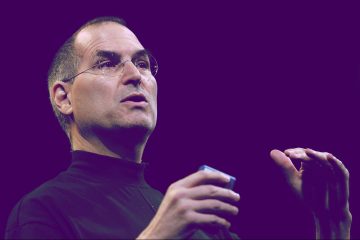
Opinions expressed by Entrepreneur contributors are their own.
If you are a creative professional, then at one point, you probably found yourself fresh out of school thinking, “Where do I go from here?”
If you would have asked this question 20 years ago, your answer would be less than inspiring.
The creative economy has exploded in size alongside the internet and, specifically, social media networks. This has contributed to the rise in demand for creative individuals in a more professional setting.
If you were to tell your grandparents you’re an aspiring graphic designer or website designer, they may think you’re crazy. “There is no money in the arts.” While that may have been true years ago, the arts have greatly contributed to our society from the beginning, and it isn’t going anywhere.
From website design to copywriters and authors, graphic designers and influencers, creative careers are in high demand right now, and the future only looks brighter.
Related: The Arts Supported Us During The COVID-19 Crisis- Now, We Need To Make Sure We Return The Favor
How creative careers worked in the past
Let’s travel back in time to the 90s. For a new graduate to break into a creative position, they would likely start with an internship or an entry-level position doing clerical or administrative work. They would be tasked with basic production duties with few opportunities to contribute to bigger ideas.
Many entry-level jobs require a degree and a few years of hard work before working up to the desired position. It seems like a bulletproof plan: go to school, work your way up to the top, and learn valuable skills as you go. In reality, it wasn’t that simple.
Individuals don’t all learn and grow in the same way. For many people, having to work for years in a corporate environment just for the chance to land a creative role was too big of a hurdle. Because there were so many barriers making it harder for people to monetize their creativity, many simply chose other paths instead.
That is what leads us to where we are in today’s creative career paths.
Related: 3 Lessons on Building Your Business for Creative Entrepreneurs
Creative careers in modern-day
Creative career paths have completely transformed in recent years, and thank goodness for that. While education is still highly valuable, the way we approach education has changed.
Today, it’s common for website and UX designers to not even have a degree. Instead, they either take a course online, watch hours of YouTube videos, or gain real-life experience as a freelancer to build their portfolio.
A creative portfolio has become more important than a degree in many ways. It’s an opportunity to show potential clients or employers exactly what kind of talent and skill they can bring to the table and not necessarily the amount of time they spend in school.
The internet has created countless new avenues to turn creativity into a career. Some people become influencers, others become freelancers, and others continue to follow the same tried-and-true corporate route.
This has given more hope to younger people who maybe aren’t sure what they want to do out of high school or college students who can’t seem to find a major that interests them. It provides professional opportunities for people to grow their skills without the pressure of sticking to one career path their whole lives.
The internet has opened up so many opportunities for individuals to learn an entirely new skill for free or within just a few weeks, and with the number of new certification programs popping up, many hiring managers today prioritize the individual’s skill rather than their education.
Where the creative economy is headed
So, where are creative careers headed?
I know, I know. The question you are all asking is, “Will AI replace me?” Unfortunately, the answer isn’t a straight yes or no, but I will say that technology to this day has not replaced creative positions within companies; it has only provided additional support.
If the past is any lesson, creatives have nothing to fear from new technology. AI is providing people with new tools that could open up new career paths for creatives down the road. It is all about inventing new ways to make an impact with your skill set.
Also, the creative industry is expected to be a major player in the economy in the future, growing 40% by 2030 and opening up at least 8 million jobs in the process. So, the opportunity to try new areas in your industry will expand as well.
Here are just a few examples of some creative careers that are expected to continue to grow.
User Experience (UX) Designers: As we rely more and more on technology, the importance of the customer experience becomes crucial. All the marketing in the world won’t mean anything if potential customers are getting lost on your website! UX designers help design websites and apps so customers can easily get what they need to do.
Creative Writers & Content Creators: Social media is an integral part of our lives, and nowadays, there’s more content than anyone knows what to do with. Because there is so much content, the bar is higher than ever to stand out from all the noise. That is why the need for creative writers and designers is in high demand.
You may be thinking, “Wouldn’t AI take their jobs, anyway?” The answer is no. While AI tools can certainly support creatives in their work, they are not yet capable of thinking and imagining how humans can. AI-generated content is based on existing content, so it never stands out from the crowd. If you want genuinely high-quality content, then you need a human touch.
The great thing about creative careers is that a creative position is needed in every industry, including finance, tech, real estate, retail, and hospitality. Whether your passion is design, storytelling, or technology, there is a place for you in every industry. The only question is, where will our creative economy take us in the next ten years?





